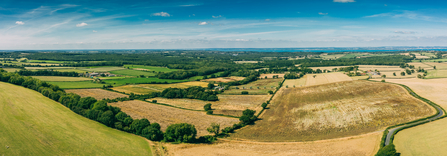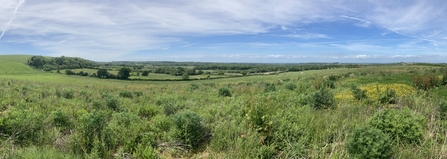In 2020, the Trust purchased its first rewilding site, Little Duxmore Farm on the Isle of Wight. The land purchase was funded through the sale of nitrate credits. Little Duxmore was an arable farm that was receiving high amounts of fertiliser inputs. By taking on the ownership and management of the 17-hectare farm, and taking the land out of intensive arable production, we were able to provide mitigation for planned housing developments through the sale of nitrate credits. Environmental credits are emerging as a new way to invest in nature’s recovery and tackle the nature and climate emergency through nature-based solutions. The Trust’s nutrient reduction programme at Little Duxmore was one of the first in the Solent. Our aims were to rewild the site, reduce nutrient pollution through the cessation of nutrient inputs, and secure the land for wildlife in perpetuity. We worked with the local authorities and statutory agencies to develop a scheme that satisfied the necessary legal requirements for nutrient mitigation and set a gold standard for similar nature-based solutions programmes.
Little Duxmore Farm sits on a tributary of the Wootton Creek, which means it can offset the impact of new developments in the Portsmouth, Havant, Fareham, and Gosport areas, which once occupied, will drain into water treatment works at Budds Farm and Peel Common. We screen all developments we provide credits to according to our ethical principles.



